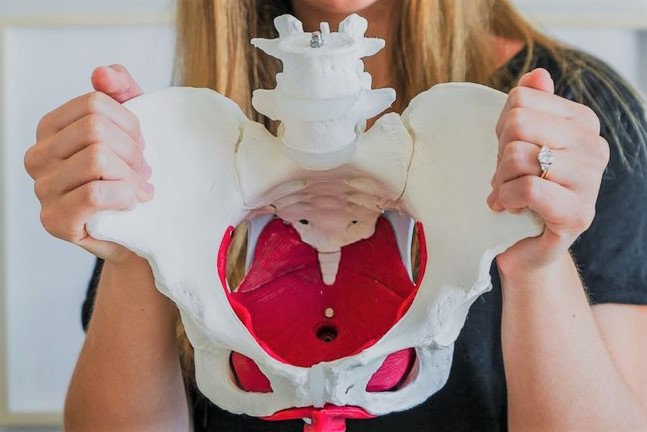What the HECK is Pelvic Floor Physical Therapy?!

So, do not worry, you are not the only one asking this question… In fact it is probably something I am asked daily! In order to describe this lets break it down into more simple categories:
1. Pelvic floor: The zone between your upper body and lower body. Basically a hammock of bones, muscles, and other tissues keeping our internal organs from hitting the ground. It is responsible for orchestrating our primal functions (pooping, peeing, and procreating).

2. Physical therapy: Therapy with the goal of preservation, enhancement, or restoration of MOVEMENT and FUNCTION impaired by disease, injury, or disability. https://www.apta.org/

Together they make pelvic floor physical therapy (sometimes called pelvic health physical therapy). Restoring optimal movement and function for the pelvis area.
For such a small area there is so much that can go awry. In fact 1 in 4 women and 1 in 5 men report pelvic floor dysfunction at some point in their life! (that is a lot of people!)
The fact of the matter is the pelvic floor and its bones, muscles, nerves, vessels, and connective tissues help us with some of the most critical functions for human life! (delivering a baby and eliminating our waste to name a few…)
Pelvic floor dysfunction is common but NOT normal. When you experience these changes there is something you can do about it; even before going to medicine or surgeries. Up to 80% of people who seek pelvic floor physical therapy find success in decreasing dysfunction/pain.
As a pelvic floor therapist I help you achieve your goals of re-gaining function like running without leaking or decreasing pain through finding the WHY and the reasoning behind this dysfunction to begin with! Generally, I look at 4 main functions of the pelvic floor.
1. Support: how is your pelvic floor supporting your organs above. Are they lifted or are the falling?
2. Stability: how is your pelvis moving with your back, core, hips and more to help you stay stable with activities. Are you experiencing low back pain or have a history or hernias?
3. Sphincteric: how are the sphincters (circular openings) of the urethra and rectum moving. Are you experiencing leakage or constipation?
4. Sexual: how is your pelvic floor tolerating stretch, penetration, or arousal. Are you experiencing pain with intercourse?
Because the pelvic floor is inside of our pelvic girdle often treatments include internal vaginal/rectal assessments and treatments (looking at muscle tension, nerve irritability, and tissue health) and external treatments such as posture and core strength/stability.
If you feel like you may be experiencing pelvic floor dysfunction no matter who you are PLEASE reach out. I am available for 15 min free consults and would love to help you determine if pelvic floor therapy is appropriate for you!
Thank you for checking out my blog and I am excited to keep you updated on new and interesting research in the pelvic world!

[…] out my previous blog on What is Pelvic Floor Physical Therapy for more details on how pelvic PT works for the above […]